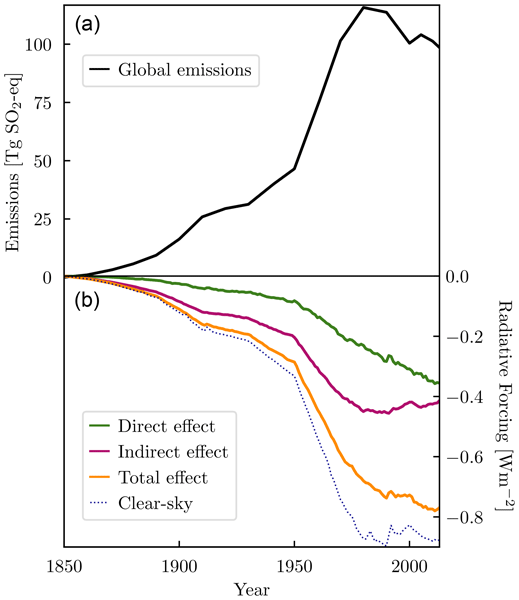Aerosols’ direct radiative effect strengthens despite falling emissions

Aerosols (small particles emitted by natural and human sources) influence Earth’s climate both by scattering sunlight directly and by altering cloud properties, which makes them more reflective. While global anthropogenic aerosol emissions have decreased in recent decades, they have shifted geographically from North America and Europe to South and East Asia.
Using a climate model (MPI-ESM1.2), a recent study by Hermant, Huusko and Mauritsen shows that the direct radiative effect of aerosols has continued to strengthen, even as emissions declined, whereas the indirect effect has weakened in line with emissions.
The divergence arises because aerosols emitted in regions with fewer clouds and longer atmospheric residence times (such as South Asia) exert a stronger direct cooling effect per unit of emissions compared to mid- and high-latitude regions. Differences in aerosol optical properties also play a role.
These results show that shifting the locations of aerosol emissions changes how effectively they influence the climate, which helps explain differences between climate models and highlights the need for further studies to better understand how aerosols offset greenhouse gas–driven warming.
